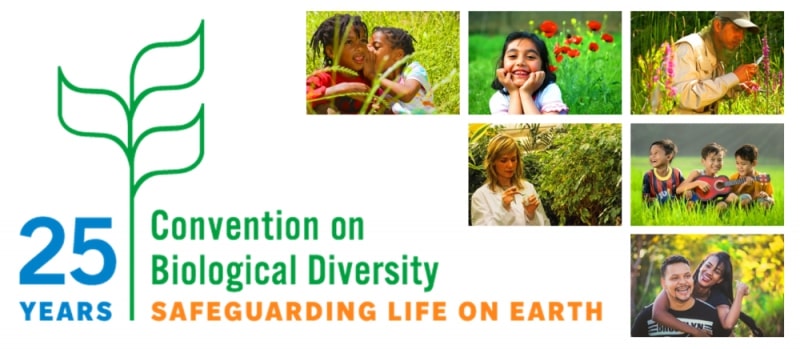What’s in today’s article?
- Why in News?
- About Convention on Biological Diversity (CBD)
- News Summary
Why in News?
- Recently, the UN secretary-general addressed the opening ceremony of the 15th session of the UN biodiversity conference (COP15) in Montreal, Canada,
- He urged the participants to take a final call on the post-2020 global biodiversity framework.
Background of Convention on Biological Diversity (CBD)
- To arrest the alarming rate of species extinction caused by human activities, the United Nations Environment Programme (UNEP) convened the Ad Hoc Working Group of Experts on Biological Diversity in 1988 to explore the need for an international CBD.
- In 1992, the Ad Hoc Working Group culminated its work with the Nairobi Conference for the Adoption of the Agreed Text of the CBD.
- The Convention was opened for signature on 5 June 1992 at the United Nations Conference on Environment and Development (the Rio “Earth Summit”) and entered into force on 29 December 1993.
- It was inspired by the world community’s growing commitment to sustainable development.
Image Caption: Timeline of Convention on Biological Diversity
What are the three main objectives of the Convention on Biological Diversity (CBD)?
- The conservation of biological diversity
- The sustainable use of the components of biological diversity
- The fair and equitable sharing of the benefits arising out of the utilization of genetic resources
What is Conference of the Parties (COP)?
- It is the governing body of the Convention and advances implementation of the Convention through the decisions it takes at its periodic meetings.
- The first session of the COP was held in 1994 in the Bahamas and to date the COP has held 14 ordinary meetings and one extraordinary meeting (to adopt the Biosafety/Cartagena Protocol).
- The COP 15 will be held in Kunming (virtual), China and Montreal (in person), Canada, in two phases.
Cartagena Protocol on Biosafety to the CBD:
- It is an international agreement (adopted in 2000 and entered into force in 2003) which aims to ensure the safe handling, transport and use of living modified organisms (LMOs) resulting from modern biotechnology.
- They may have adverse effects on biological diversity, taking also into account risks to human health.
Nagoya Protocol to the CBD (on Access to Genetic Resources and the Fair and Equitable Sharing of Benefits Arising from their Utilization):
- It is an international agreement (entered into force in 2014) which aims at sharing the benefits arising from the utilization of genetic resources in a fair and equitable way.
News Summary:
- The UN secretary-general (UNSG – Antonio Guterres) urged the countries to deliver an ambitious deal – a peace pact with nature, for a better, greener, bluer and more sustainable world.
- The countries’ negotiators at the 2nd phase of the COP 15 will brainstorm on the post-2020 Global Biodiversity Framework, actions that could help in stopping biodiversity loss.
- Access and benefit sharing is one of the goals of the framework that would work on the premise that the biotech, pharmaceutical and other industries that use biodiversity must share the benefits equitably with communities.
- Besides raising critical issues of finance to address challenges posed by the biodiversity loss, India along with over 100 other countries will push for a global goal to protect at least 30% of the planet by 2030 – ‘30×30 Target.’
- At the opening of the 15th session UNSG stated that with our bottomless appetite for unchecked and unequal economic growth, humanity has become a weapon of mass extinction.
- He stated that multinational corporations are filling their bank accounts while depleting the world’s natural resources, creating an estimated $3 trillion annual loss by 2030.
- As a result, the world requires nothing less than a bold post-2020 Global Biodiversity Framework from this meeting.
Q1) What is 30×30 Target?
“30×30,” calls for protecting 30 percent of the world’s terrestrial and marine habitats by 2030.
Q2) How many members are there in CBD?
The convention came into force on December 29, 1993. India became a party to the convention on February 18, 1994. At the present, there are 196 Parties to this Convention.
Last updated on January, 2026
→ Check out the latest UPSC Syllabus 2026 here.
→ Join Vajiram & Ravi’s Interview Guidance Programme for expert help to crack your final UPSC stage.
→ UPSC Mains Result 2025 is now out.
→ UPSC Notification 2026 is scheduled to be released on January 14, 2026.
→ UPSC Calendar 2026 has been released.
→ UPSC Prelims 2026 will be conducted on 24th May, 2026 & UPSC Mains 2026 will be conducted on 21st August 2026.
→ The UPSC Selection Process is of 3 stages-Prelims, Mains and Interview.
→ Prepare effectively with Vajiram & Ravi’s UPSC Prelims Test Series 2026 featuring full-length mock tests, detailed solutions, and performance analysis.
→ Enroll in Vajiram & Ravi’s UPSC Mains Test Series 2026 for structured answer writing practice, expert evaluation, and exam-oriented feedback.
→ Join Vajiram & Ravi’s Best UPSC Mentorship Program for personalized guidance, strategy planning, and one-to-one support from experienced mentors.
→ UPSC Result 2024 is released with latest UPSC Marksheet 2024. Check Now!
→ UPSC Toppers List 2024 is released now. Shakti Dubey is UPSC AIR 1 2024 Topper.
→ Also check Best UPSC Coaching in India

















